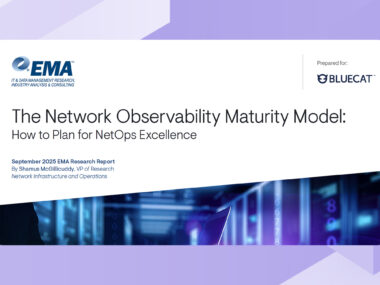The .ORG Domain Sale: Explained
Private equity firm Ethos Capital plans to buy the domain registry responsible for .org domains. Here’s why this matters.

You may have heard by now that private equity firm Ethos Capital plans to buy the domain registry responsible for .org domains.
If you’re wondering why this matters, or just trying to understand how the internet is divvied up, or how an entire domain space can be bought, you’re in the right place.
First: some context on how the internet works
Click here to skip this section.
What are domain names?
A website isn’t just a website. It is content hosted and displayed to you by a server, located somewhere in the world. To access the right server, your computer looks a website up by its IP address. IP addresses are like GPS coordinates, and look something like “123.168.1.1”.
But you don’t typically type that into your address bar, do you?
Right. Since strings of numbers are hard to remember, the godparents of the internet created a way for us to express IP addresses in real words.
This sorcery is called the domain name system (DNS). Instead of you having to type 216.239.63.255 every time you want to reach your favourite search engine, it’s how all you have to do is type google.com into your search bar.
How are domain names doled out?
Simplistically, you don’t want to give two different IP addresses on the internet the same domain name. That would be confusing. (But don’t get me started on internal DNS architectures…)
Enter: Domain name registries. These are organizations that keep the ‘who uses which domain name’ situation under control. When somebody wants to become the proud owner of a specific domain name, they ask a domain name registry on a first-come-first-served basis.
Remember, google.com is a different domain than google.ca. These domain name ‘endings’ are called Top Level Domains (TLD), and exist to add a bit more order and options to the realm of domain names. If you’re a Canadian-based business, you have the option to buy a country-based TLD. If you’re a business, you may want either .com or .biz. If you’re a nonprofit, you’ll probably want .org.
Typically, each TLD is operated by a separate registry: .ca by the Canadian Internet Registry Authority (CIRA), .com by Verisign, and .org by the Public Interest Registry (PIR). (If you want to dig really deep, PIR actually sub-contracts operations of .org to Verisign.)
All about the sale
Who owns .org now?
The Public Interest Registry (PIR). It gets confusing, but PIR is directly run by the Internet Society (ISOC). Based in Reston, Virginia, PIR is a nonprofit created by ISOC, originally to manage the .org domain. Both are overseen by Internet Corporation for Assigned Names and Numbers (ICANN). Approximately 10 million domains are registered with PIR.
Who is buying .org?
For a lofty $1.1B, Ethos Capital is trying to buy the PIR. Ethos Capital is a year-old private equity company run by former ICANN SVP of Development and Public Responsibility Programs and an investment veteran. The big question on everybody’s minds is how exactly Ethos Capital plans to make a return on their investment.
How do domain name registries work?
Registries sell domain names (on a first-come-first-served basis) and keep track of registered domains along with who registered them. Domain name registries have the power to deny applications for particular domain names, and set prices for the ownership of domain names; both of these powers can be abused for gain.
To keep them honest, registries are overseen by ICANN, which is operated on a multi-stakeholder model to balance the interests of individual internet users, corporations, governments, and more. ICANN doesn’t necessarily manage registries, and there are some organizations in between ICANN and PIR, but ICANN has authority over their big decisions.
For example, until recently, ICANN maintained a rent control-like cap on price raises for .org domains, to limit year-over-year price increases higher than 10%. Then ICANN approved a removal of that cap.
What could the damage be?
What might be problematic is a private-interest company would have the bird’s eye view of who owns which domains in the .org space. Registries are, at their core, a detailed and highly accurate database of who owns which domain. From this database, it’s possible to infer relationships between organizations that otherwise wouldn’t be discovered. Or just sell the data.
Aside: yes, a lot of the information held by registries (WHOIS-type information) is available for public lookup. But it can only be obtained by individual website-by-website lookups, as opposed to analyzed in a centralized format, so the value of a registry is its database-like quality.
The other powers registries have (which can be abused) are:
- Approval over domain purchase requests.
- Ability to set prices for domain ownership. Keep in mind that users of .org domains are, for the most part (but not exclusively), nonprofits with a tight website administration budget.
Combined, these three abilities can be abused to impact access to internet presence for groups or organizations, and leverage data that would otherwise be hidden.
Is there an upside?
Ethos Capital claims that they intend to operate the PIR in the same spirit as it always has been run – with a commitment to supporting non-profits, not unreasonably raising prices for the .org domain, and making fair decisions.
ISOC, for its part, claims that proceeds from the sale will help keep it stably funded and in a position to carry out its own mission (supporting open access to the internet for all people). At the same time, ISOC claims – granted, vaguely – that PIR’s new ownership will be good for the .org registry and those who rely on it.
Assuming this pans out, the upside looks like a… maintenance of the status quo.
Finally, an additional upside from all this (regardless if the sale pans out) is now we know the market value of a .org registry – and it’s huge.
Who opposes the sale, as the terms currently stand?
Many groups. Many nonprofits (enough to start a petition), lawmakers, and big names in internet including the Electronic Frontier Foundation (EFF), Wikimedia, Mozilla. Many independent internet experts do, too. Policy professor Josephine Wolff wrote a very well-thought-out op-ed in the New York Times about why ICANN should seriously consider the repercussions of approving the sale. Public opinion, generally, also opposes the sale.
ICANN initially didn’t want to form an opinion, but has since paused the sale and is taking its sweet time to formalize a stance.
What’s next?
We’re basically waiting for ICANN to veto (or not veto) the sale, and will see what happens next.
In the meantime, you should know there are many more nuances to this story. Groups interested in blocking the deal have their own interests and connections, for example. This blog post is meant to give you the high-level gist of what’s happening, and I encourage you to keep reading if you’re interested.




